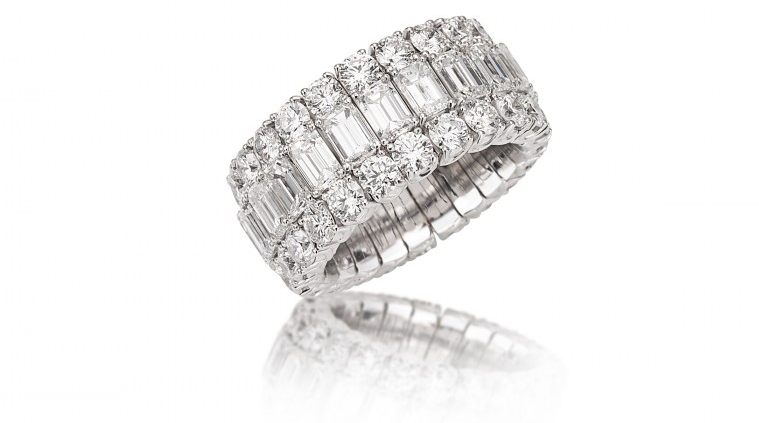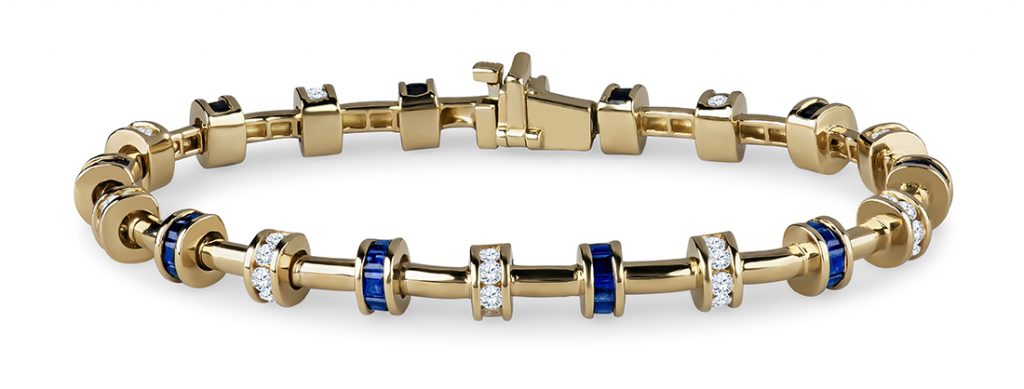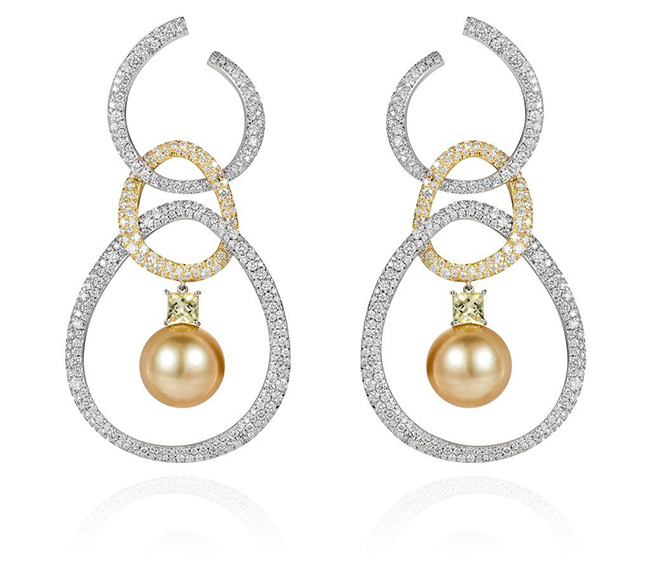
Cynthia Morrow founded Covett, a platform offering co-ownership for luxury jewellery assets after a friend suggested they share their diamond jewellery. Luxury Briefing asks Cynthia about how she’s built a sharing economy-style brand in the luxury jewellery space and what’s in the pipeline for Covett.

Can you share a bit about your experience and how it’s led you to where you are today?
I spent 25 years as a management consultant in transformation and change; for six of those years, I was a member of a program called Haas@work, which was an innovation to the Haas Business School curriculum. We coached MBA students to discover and deliver innovative solutions to challenges facing participating companies, among them: Hotwire, Visa, Mckesson, Yahoo and Facebook. I was always coming up with business ideas and therefore this experience convinced me my next career move was to transform a business sector that I was passionate about, which is luxury goods.
What was the initial thinking behind Covett?
I wanted to come up with a business that was ‘capital-light’ and started thinking about circular and sharing economy plays. I remembered a friend had once said we should share our diamond jewellery and that sparked the idea for fractional ownership of luxury goods. I then decided to start with jewellery because I had a ‘covet list’ of jewellery rather than a bucket list of experiences, and hence Covett was born. I have since been joined by four other jewellery lovers who are helping me grow the company.
How does membership work?
We invite anyone who is a jewellery enthusiast to join the Covett Community and build their Covett List; this helps us determine what to put in the vault for co-ownership. Four co-owners each own a 20 per cent share in a Covett piece, which allows them monthly access for up to five consecutive days plus 12 floating days per year. Covett owns the fifth share, which allows us to insure and manage it. Once you are a co-owner, you can access our Covett Vault and borrow other pieces, when they are available, for a fee. A Covett share provides lifetime ownership, which as with any other asset can be passed on as an inheritance or gifted to another.
Who is your customer and how do you communicate with them?
Our primary target customer is a professional female, who is a jewellery enthusiast, buys her own jewellery and is savvy with her money. With the exception of engagement rings, the cost of jewellery has an inverse relationship to use. The more a piece costs, the less it tends to be worn.
We use many different methods to communicate; our primary method currently is to hold events and invite people to meet us, hear our story and view gorgeous jewellery. This helps us build our subscriber list, as we send out monthly emails about our upcoming events and newsworthy items like new pieces being added to the Covett Vault. We also use social media to spread the word; our primary channels are Facebook, Instagram, Pinterest (all @covettluxury) and Linkedin.
What are the challenges associated with a co-ownership business model?
This is an interesting question. From the perspective of running a co-ownership business, the biggest challenge is persuading people to make a mindset shift to sharing/co-owning rather than owning outright. It’s an education process and it takes time to shift thinking and to build trust, therefore our customer acquisition is slower than a traditional business.
Another challenge is keeping the service fee, which covers insurance, cleaning, maintenance and delivery, at a level where the customer perception is value. Providing this level of concierge service is costly, and we will need to evolve it as we scale, but it is important for us to deliver service that exceeds expectations. We want Covett to feel like it’s too good to be true, but it isn’t.
On the co-owner side, our data tells us that many people are nervous about losing the piece because others have a stake in it. That’s why we insure every piece for loss and theft.
What do you see as the biggest challenge facing the jewellery and watches industry?
There are several – although people are still investing in luxury jewellery and watches, the latest growth figure I’ve seen is around 1.7 per cent per year, globally. I believe there are more competition and pricing pressures as more designers and manufacturers go online D2C (direct-to-consumer), rather than selling through jewellery retailers. For jewellery designers and jewellery manufacturers, I think the biggest challenge is finding new channels in which to sell luxury jewellery and watches.
On the consumer side, one channel that is gaining popularity is pre-owned pieces being sold on platforms such as Etsy, Vestiaire Collective and others, which has a negative impact on new sales of new jewellery. Rental is taking off in the United States and is also making a foray into China, and again will most likely have a negative impact on sales of new jewellery. These models have a sustainability bent, which is appealing for certain sectors of the market.
No one knows yet what the impact of lab-grown diamonds and gemstones will have on the market, but DeBeers is making a bet with their new company, Lightbox, which is focusing on selling lab-grown diamond accessories targeted at singles.
We believe Covett offers a new channel for brands, independent jewellery designers, and jewellery manufacturers to sell more of their higher-priced pieces, since sharing allows people to own more of the jewellery they covet, at a fraction of the cost. We also remove all the hassles of owning and caring for luxury jewellery making the whole experience joyful. It’s a win/win for the industry and the consumer.
What is in the pipeline for Covett?
We just launched an annual subscription to the Covett Vault, as we wanted to be able to offer a gift option as well as a method for people to experience our smart ownership model and white-glove concierge service. It’s also a great option for our secondary target market, which skews younger, making access to this level of fine-jewellery even more affordable. The Covett Vault contains the pieces currently owned by our co-owners, and we use spare capacity (Covett’s share or un-owned shares) to loan out the pieces. Naturally, all subscribers are vetted prior to us loaning a piece.
This year, Covett will begin to allow our co-owners to monetise their jewellery by placing it in the Covett Vault. We will have an independent appraisal of each piece and determine pricing for loan or sales of Covett shares, whichever the co-owner prefers.
One trend that is on the rise is fine jewellery for men. While the selection isn’t quite what we would like to see, we definitely know this market will grow. In the meantime, we’re looking at adding luxury watches for both men and women in mid- to late-2020.


